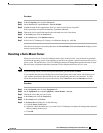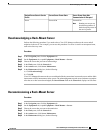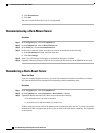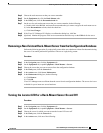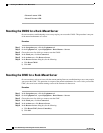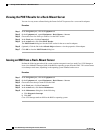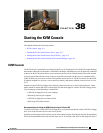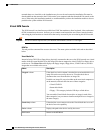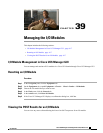
CHAPTER 38
Starting the KVM Console
This chapter includes the following sections:
• KVM Console, page 611
• Starting the KVM Console from a Server, page 615
• Starting the KVM Console from a Service Profile , page 615
• Starting the KVM Console from the KVM Launch Manager, page 615
KVM Console
The KVM console is an interface accessible from the Cisco UCS Manager GUI or the KVM Launch Manager
that emulates a direct KVM connection. Unlike the KVM dongle, which requires you to be physically connected
to the server, the KVM console allows you to connect to the server from a remote location across the network.
You must ensure that either the server or the service profile associated with the server is configured with a
CIMC IP address if you want to use the KVM console to access the server. The KVM console uses the CIMC
IP address assigned to a server or a service profile to identify and connect with the correct server in a Cisco
UCS.
Instead of using CD/DVD or floppy drives directly connected to the server, the KVM console uses virtual
media, which are actual disk drives or disk image files that are mapped to virtual CD/DVD or floppy drives.
You can map any of the following to virtual drives:
• CD/DVD or floppy drives on your computer
• Disk image files on your computer
• CD/DVD or floppy drives on the network
• Disk image files on the network
Recommendations for Using the KVM Console to Install a Server OS
To install an OS from a virtual CD/DVD or floppy drive, you must ensure that the virtual CD/DVD or floppy
drive is set as the first boot device in the service profile.
Installing an OS using the KVM console may be slower than using the KVM dongle because the installation
files must be downloaded across the network to the server. If you map a disk drive or disk image file from a
Cisco UCS Manager GUI Configuration Guide, Release 2.0
OL-25712-04 611



